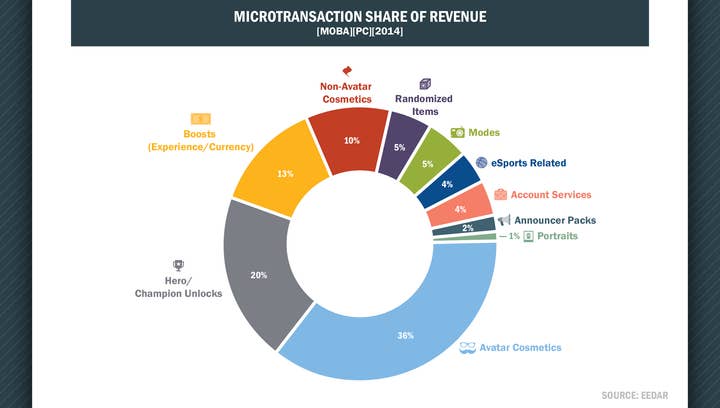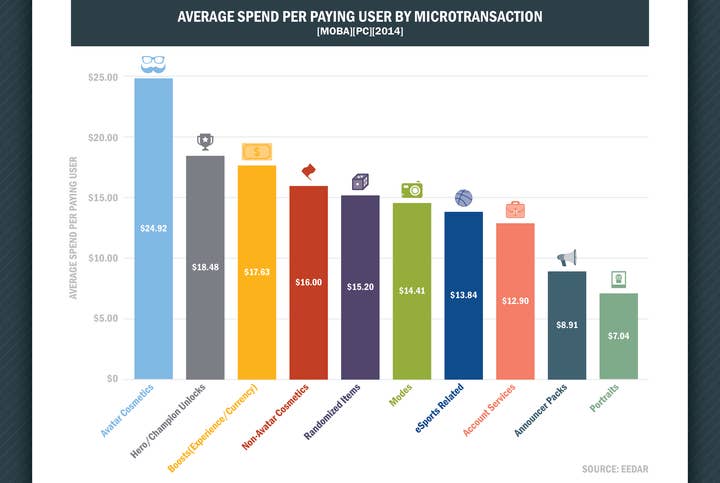MOBAs will overtake MMORPGs in F2P revenue this year - EEDAR
EEDAR analyst Ed Zhao examines why the MOBA field is red hot; MOBAs should generate half a billion dollars in North America this year
The F2P business model, with its wildly successful market leaders, offers an alluring proposition to many developers. Firstly, the upside is tremendous: F2P allows for an unparalleled audience size, which can be a bedrock for engagement and community. In addition, users can spend near infinite amounts of money. While traditional retail titles have relied on a gated $60 for access, F2P titles can generate hundreds from their core users through a plethora of visual and game-affecting microtransactions.
In particular, MOBAs have experienced immense success in conjunction with the explosive rise of F2P in Western audiences. Perhaps more than any other genre, MOBAs can take advantage of a large, competitive audience while monetizing through champion-specific microtransactions. While the biggest revenue driver in F2P has historically been the MMORPG, EEDAR predicts that by year's end, MOBA titles will reach $501 million annually in North America and account for the greatest percentage of F2P dollars.

Largely, this is due to the interaction between microtransactions and the genre's gameplay hooks. MOBAs are exceptionally well positioned since they emphasize player investment with individual champions. Users find a champion that fits their play style or resonates thematically, which then leads to deeper engagement over time. In addition, the competitive nature of MOBA titles also underscores individual character mastery rather than continued experimentation. Eventually, that commitment manifests in the purchasing of avatar cosmetics.
Titles such as League of Legends and Dota 2 generate their greatest amount of revenue in this way, with an estimated $180 million (or 36 percent of revenues) coming from avatar vanity items. One primary reason is the bird's eye third-person view, which allows players to constantly view these cosmetics. This isn't the case for other genres, such as F2P Shooters, where a first-person view can obscure; thus, avatar cosmetics are only the third highest revenue driver for F2P Shooters.

Within MOBAs, the second and third most prolific revenue generators are Hero Unlocks and Boosts, respectively. These two microtransactions synergize with F2P as a service platform, which is another area where MOBAs excel. A title such as SMITE releases a new character roughly every month, which sets a strong cadence for content updates. In addition, each God can be vastly different from the last, offering exceptionally varied gameplay experiences. Users view this new content as dynamic and intriguing, which then convinces many to either directly purchase a new champion or to buy a time-saving boost.

Ultimately, certain games benefit more from different business models. F2P is perfectly suited for MOBAs due to larger audience sizes, fierce competition, and individual character investment. Other genres, such as MMORPGs, monetize well with hybrid subscription models. Geography can also be an important factor, as Western Markets are happy to purchase premium titles such as Call of Duty or Battlefield whereas Eastern Markets prefer F2P variants. Choosing the correct business model is fundamentally important for a game's success, but that choice has to foremost adhere to gameplay and audience.
This data is from EEDAR's 2015 Deconstructing PC F2P Report. A free white paper focused on the North American MOBA market can be downloaded at this link.








